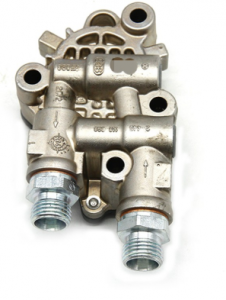Diesel Fuel Injection Pump 4307021 Engine Auto Engine Part
products description
| Reference Code | 4307021 |
| MOQ | 1 PCS |
| Certification | ISO9001 |
| Place of Origin | China |
| Packaging | Neutral packing |
| Quality Control | 100% tested before shipment |
| Lead time | 7~15 working days |
| Payment | T/T, Western Union, Money Gram, Paypal, Alipay, Wechat |
Diesel fuel pump: the power core of diesel engine fuel system
As a core component of a diesel engine's fuel supply system, the diesel fuel pump undertakes the crucial functions of fuel pressurization, metering, and delivery. Its performance directly determines the engine's power output, fuel economy, and emissions. This article explains the structural types, operating principles, technical features, and development trends of diesel fuel pumps, providing a reference for their design optimization and application.
I. Structural Types and Core Components
Diesel fuel pumps are primarily categorized into mechanical and electronically controlled pumps. Mechanical pumps, such as in-line pumps and distributor pumps, feature core components including a plunger assembly, a delivery valve, a camshaft, and a fuel control rack, achieving fuel flow control through mechanical transmission. Electronically controlled pumps, such as high-pressure common rail pumps, integrate electromagnetic metering valves, pressure sensors, and an ECU control unit for precise pressure and flow control. The plunger assembly, the core pressurization unit, requires a clearance of 0.001-0.003mm and is made of nitrided steel or tungsten carbide for improved wear resistance.
II. Operating Principle
It operates according to a "suction-pressure-delivery" cycle: When the camshaft drives the plunger upward, the pump chamber volume decreases, pressurizing the fuel to 1000-2500 bar. After overcoming the spring force of the delivery valve, the fuel enters the high-pressure fuel line. As the plunger descends, negative pressure forms in the pump chamber, completing the suction process. Mechanical pumps control fuel volume by adjusting the effective plunger stroke via a rack, while electronically controlled pumps use an ECU to adjust the metering valve opening based on operating signals, achieving dynamic control with millisecond-level response.
III. Technological Development and Performance Optimization
Current technology demonstrates three major trends: First, high pressure has been increased, with common rail pump pressure increasing from 1600 bar to 2500 bar and atomized particle size reduced to below 10μm. Second, integration has been achieved, integrating fuel metering with the pressure control unit, increasing response speed by 40%. Third, material innovation has been achieved, with diamond-like carbon coating (DLC) applied to the plunger surface, extending fuel life by more than three times. Furthermore, the intelligent diagnostic system, through vibration and pressure monitoring, can provide early warning of faults such as plunger wear.
Diesel fuel pumps are evolving from mechanical control to intelligent electronic control. High-pressure and precision technologies enable them to meet China VI and Euro VII emission regulations while improving fuel efficiency by 8%-12%. In the future, new fuel pumps compatible with alternative fuels and hybrid systems will become a key research and development focus, providing core support for the sustainable development of diesel engines.























